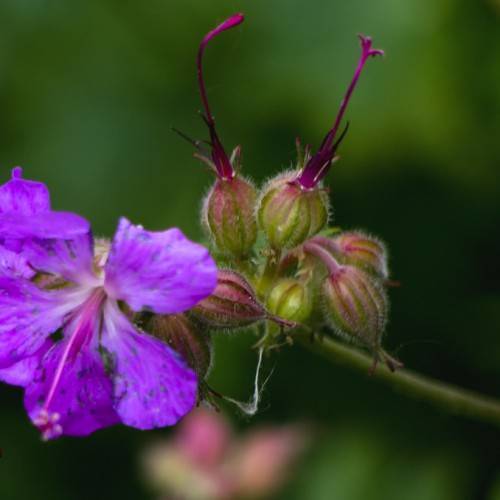
cranesbill
Geranium macrorrhizum
Cycle:
Herbaceous Perennial
Watering:
Minimum
Hardiness Zone:
4 - 8
Flowers:
Flowers
Sun:
Full sun,part shade
Leaf:
Yes
Growth Rate:
Low
Maintenance:
Low
Salt Tolerant:
Yes
Care Level:
Medium
watering
Cranesbill (Geranium macrorrhizum) should be watered on average once or twice a week. However, depending on the climate in which they are planted and the amount of rain they receive, they can require more or less frequent watering. During hot, dry weather, they may need to be watered more often, such as every other day, while very cold, wet weather may require less frequent watering. When watering, it is important to make sure the soil stays evenly moist. Be careful not to over-water, as they can be sensitive to soggy conditions. You may want to check the moisture levels of the soil with your finger or a soil moisture meter to make sure there is adequate soil moisture, but too much is not ideal for this species.
sunlight
Cranesbill (Geranium macrorrhizum) is a perennial plant that grows best in full sun exposure. It requires at least 6-8 hours of direct sunlight each day to thrive. It is important to keep in mind that this species of geranium does not tolerate full shade, as it will not flower as well. The plant should also be placed in an area where direct sunlight is not blocked by trees, buildings, or other shadows during most of the day. When direct sunlight is blocked, the plant will require more shade and may suffer from disease and discoloration. In addition to receiving direct sunlight, it is important to ensure that the soil in which the cranbsbill is growing is well-drained and moist.
pruning
Cranesbill (Geranium macrorrhizum) is a low-maintenance perennial that requires minimal pruning. The plant tends to have a vigorous growth habit, so it is best to prune off any dead or damaged stems in early spring (before new growth emerges). This will keep to the plant healthy and encourage fresh growth. If you want to keep the plant looking neat and full, then after it blooms in early spring, prune the stems back by about 1-third. This will help to remove the faded flowers and avoid the plant becoming overgrown. Be careful not to prune too hard or severely, as this could damage and weaken the plant. Regular light pruning is the best approach to keep the plant healthy and looking its best.
